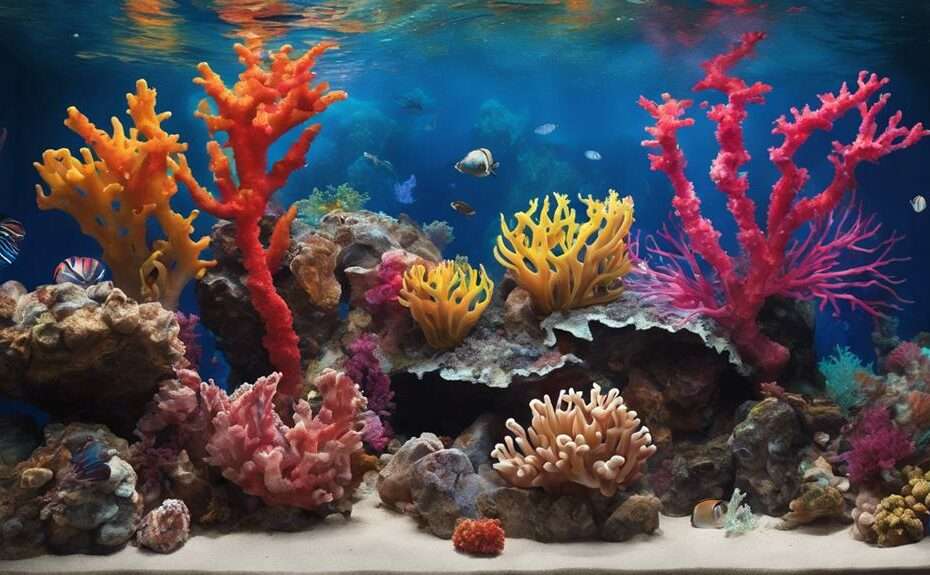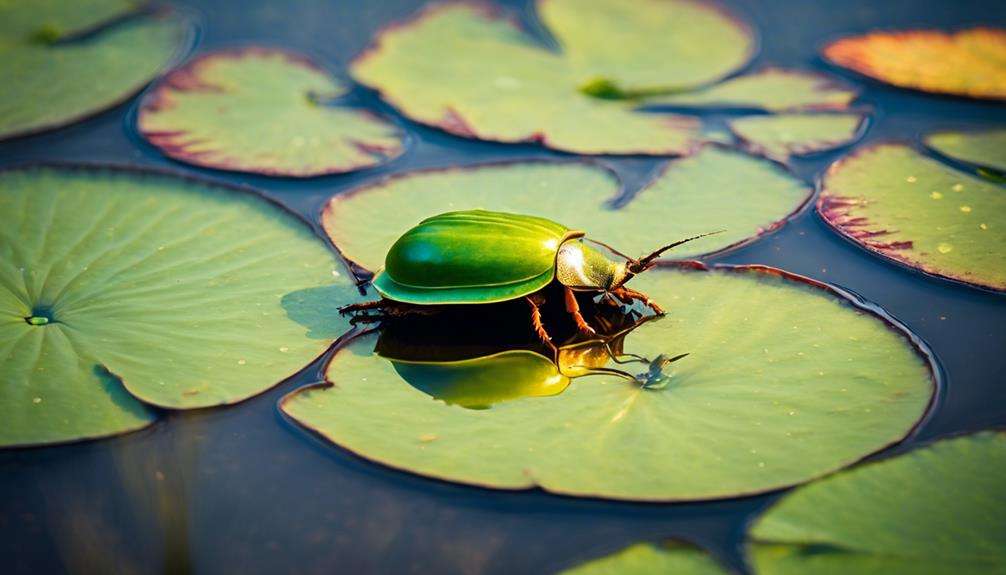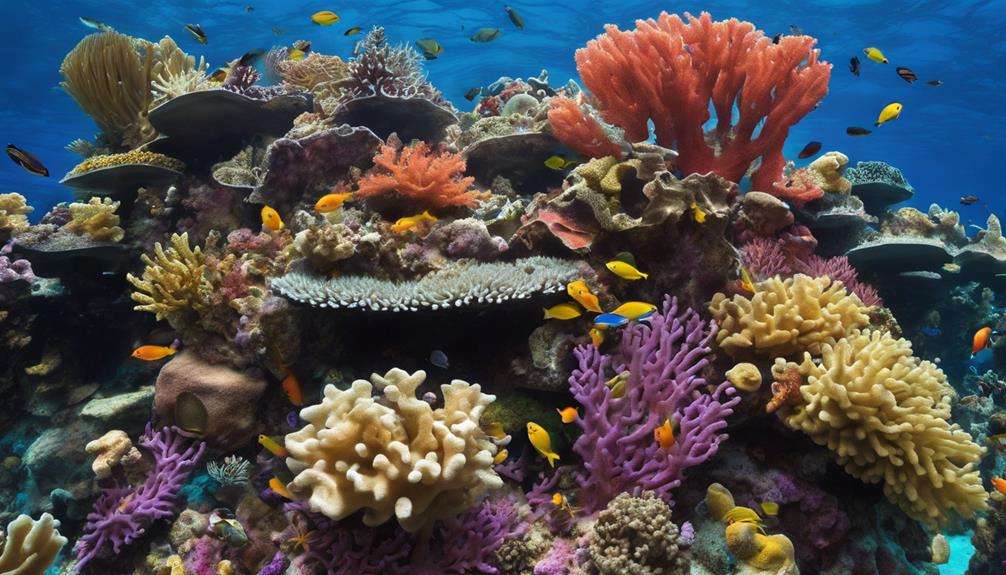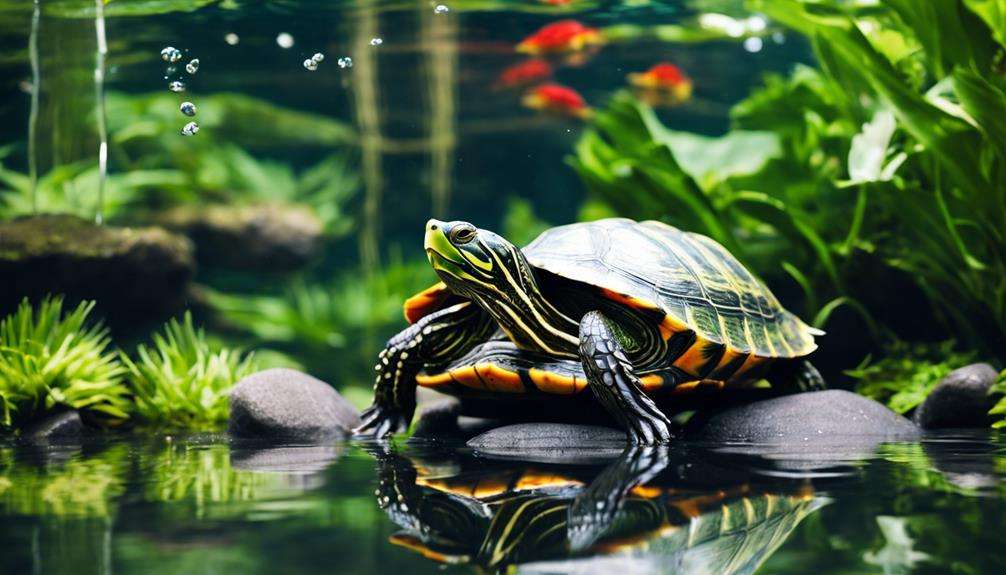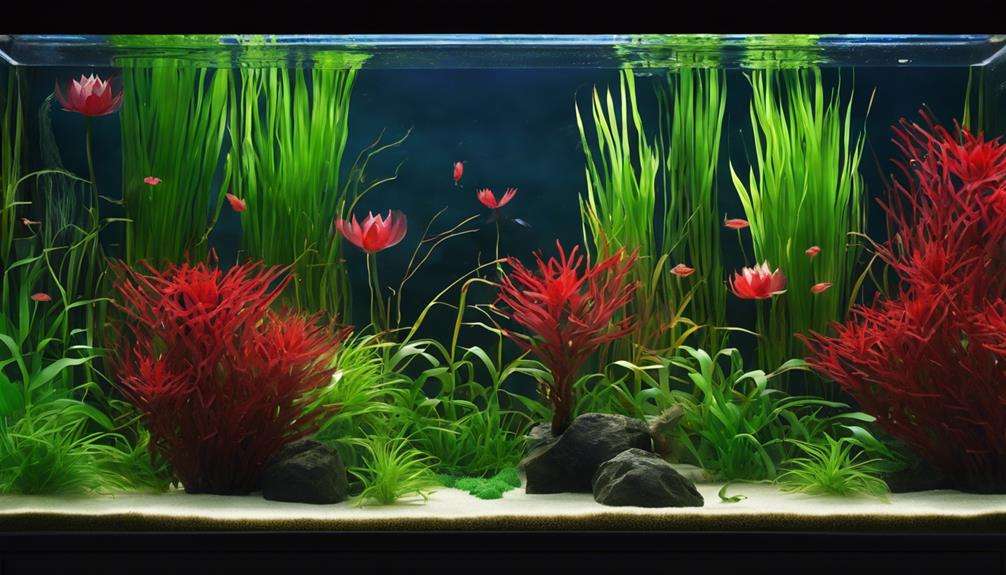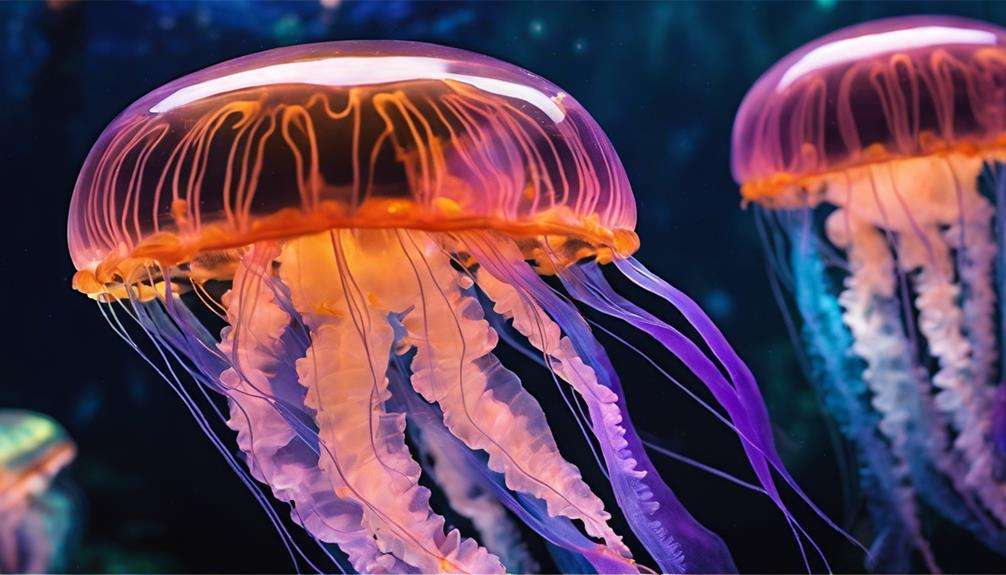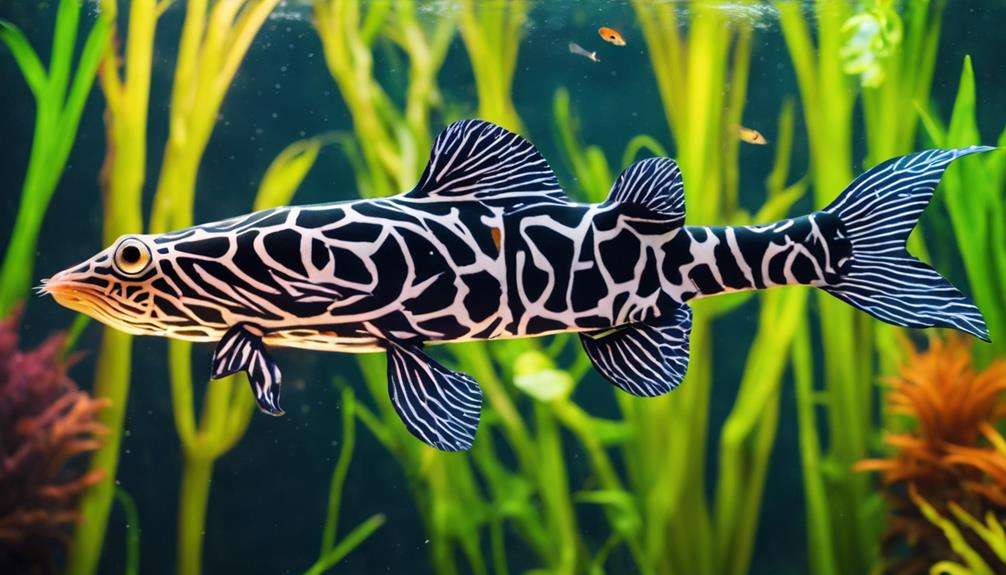If you've ever marveled at the vibrant colors and intriguing behaviors of mantis shrimp, you might be contemplating adding one to your marine aquarium.
However, before you take the plunge, there are essential aspects to ponder to guarantee the well-being of these unique creatures. From their impressive hunting skills to their potential impact on tank inhabitants, the world of mantis shrimp is as complex as it is enthralling.
Stay tuned to uncover valuable insights on creating a harmonious environment for these fascinating crustaceans that will both challenge and reward your dedication to marine aquarium keeping.
Key Takeaways
- Choose the right mantis shrimp type based on feeding habits.
- Set up a suitable tank environment with proper lighting and filtration.
- Provide a diverse, protein-rich diet for optimal nutrition.
- Keep mantis shrimp solitary to prevent aggression towards tankmates.
Mantis Shrimp Types and Characteristics
Within the domain of marine aquariums, understanding the different types and characteristics of mantis shrimp is important for successful care and observation.
Mantis shrimp are classified into two main categories based on their hunting abilities: spearers and smashers. Spearers, such as the Peacock mantis shrimp, utilize sharp, spiny appendages with barbed tips to stab soft-bodied prey like worms and fish.
In contrast, smashers have club-like appendages that they use to deliver powerful blows, enabling them to crack open hard-shelled prey like crabs and snails. Smashers are particularly favored in marine aquariums for their fascinating behavior and striking appearance, often showcasing vibrant colors ranging from greens and blues to reds and oranges.
These creatures can vary significantly in size, with specimens measuring anywhere from 1 to 15 inches in length, adding diversity and intrigue to any marine aquarium setting.
Creating the Ideal Aquarium Environment
To create the ideal environment for mantis shrimp in your marine aquarium, make sure the tank includes sand substrate for burrowing and hiding, along with rocks, coral gravel, and live rock rubble to replicate their natural habitat. Mantis shrimp thrive in tanks with lower output LED lighting to prevent important.
It's recommended that the tank for mantis shrimp be at least 10 gallons in size to provide ample space for their activities. Proper filtration is essential for maintaining water quality in the tank, ensuring a healthy environment for these fascinating creatures. The substrate should be fine sand, allowing the mantis shrimp to dig and create burrows.
Adding rocks and coral structures not only mimics their natural habitat but also provides hiding spots and enrichment. By carefully considering these elements in setting up your tank, you can create a suitable habitat for mantis shrimp that promotes their well-being and natural behaviors.
Feeding and Nutrition Guidelines
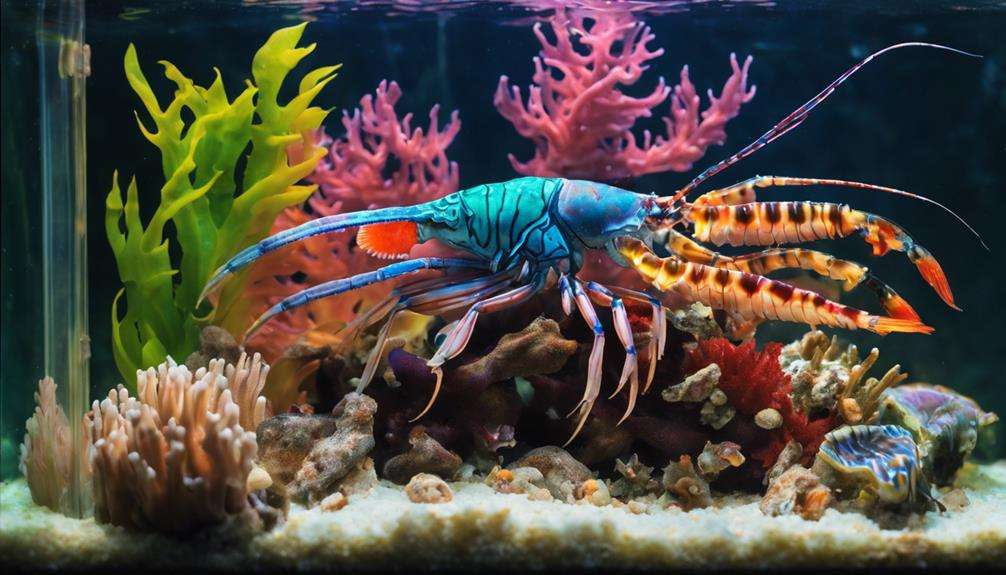
For essential health and nutrition of mantis shrimp in your marine aquarium, it's ideal to provide a diet rich in protein, consisting of live or thawed seafood such as clams, mussels, and fish.
Mantis shrimp are carnivorous predators with feeding habits that involve quick and deadly strikes using their powerful appendages to catch and consume their prey. To guarantee their well-being, offering a varied diet is critical to supply the necessary nutrients they require.
Feeding frequency should be adjusted based on the shrimp's size and appetite, typically necessitating multiple small meals throughout the week. Monitoring their feeding behavior and adjusting portion sizes accordingly can help maintain a healthy and balanced diet for mantis shrimp in your marine aquarium.
Reproduction and Breeding Insights
Mantis shrimp engage in sexual reproduction, with females typically depositing eggs in their burrows. These eggs are fertilized externally by the male, who diligently guards them until hatching. The hatched larvae undergo various developmental stages before maturing into juveniles.
Achieving breeding success with mantis shrimp in captivity can be demanding due to their intricate reproductive behaviors and needs. To enhance the likelihood of successful breeding, providing ideal conditions such as a well-designed tank setup, maintaining high water quality, and ensuring proper feeding is essential. By mimicking their natural habitat as closely as possible, you can create an environment conducive to reproduction.
Understanding the specific requirements of mantis shrimp during the breeding process is vital for increasing the chances of successful reproduction and rearing of their offspring. With dedication and attention to detail, you can potentially witness the fascinating life cycle of mantis shrimp unfold within your marine aquarium.
Managing Tankmates and Potential Issues
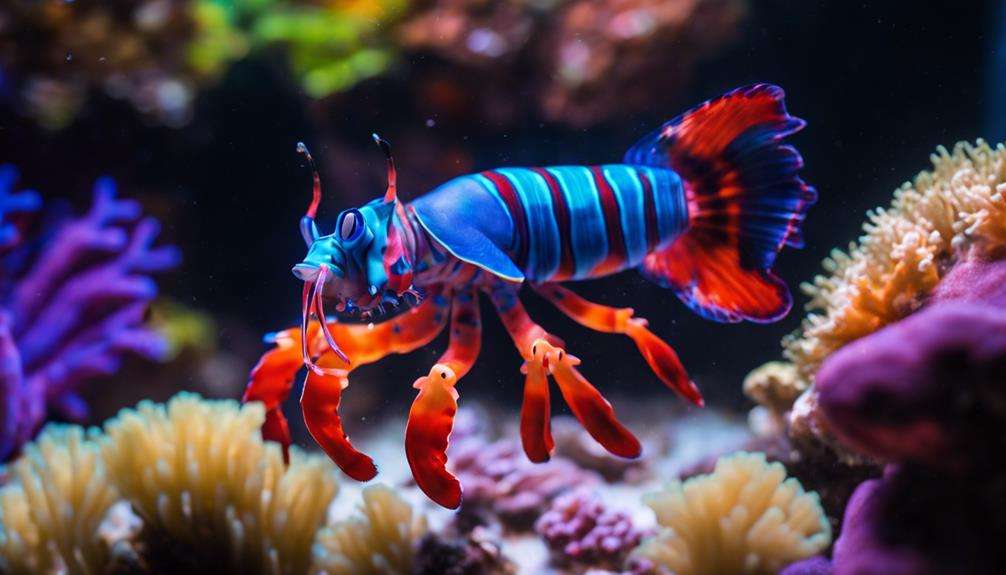
When considering managing tankmates for mantis shrimp, focus on selecting companions that can coexist peacefully in the aquarium environment. Mantis shrimp should be kept alone in tanks due to their aggressive and predatory nature.
Suitable tankmates include small, fast-swimming fish or peaceful invertebrates that aren't perceived as prey. It's essential to avoid slower-moving fish, shrimp, or invertebrates that can't evade the mantis shrimp's strikes.
Potential issues with tankmates stem from the mantis shrimp's aggression, causing stress and possible injury to other tank inhabitants. Regular monitoring and observation of tank behavior are essential to promptly identify any aggression or stress among tankmates.
Addressing these issues quickly can prevent any harm that may arise from interactions with the mantis shrimp. By carefully selecting compatible tankmates and vigilantly watching for signs of aggression, you can maintain a harmonious environment in your marine aquarium.
Frequently Asked Questions
Can You Keep a Mantis Shrimp in a Reef Tank?
You shouldn't keep a mantis shrimp in a reef tank due to compatibility concerns. They require a species-specific setup, large tank with hiding spots, proper feeding, and careful monitoring of aggression levels. Tank maintenance and water quality are essential.
Can You Put a Mantis Shrimp in a Tank?
Yes, you can put a mantis shrimp in a tank. They require specific tank conditions, solitary housing due to aggression, and a diet of seafood. Regular maintenance, monitoring water quality, and understanding their behavior are vital for their well-being.
Why Are Mantis Shrimp Not Often Kept in Aquariums?
In aquariums, mantis shrimp are rare due to their aggressive nature, posing risks to tankmates. Their specific care needs, including feeding habits and tank setup, make them challenging. Many prefer viewing them in public aquariums for safety.
What Is the Lifespan of a Mantis Shrimp in an Aquarium?
In your marine aquarium, a mantis shrimp's lifespan hinges on factors like diet variety, stable tank conditions, and stress avoidance. Guarantee suitable tank size, water parameters, and behavioral understanding to promote longevity.
Conclusion
To sum up, caring for mantis shrimp in your marine aquarium can be a rewarding experience. By creating a suitable environment, providing proper nutrition, and managing tankmates effectively, you can enjoy the vibrant colors and unique behaviors of these fascinating crustaceans.
Remember to handle them with care and appreciate their remarkable adaptations, such as their powerful claws and exceptional eyesight. Immerse yourself in the world of mantis shrimp keeping and witness the wonders of these enchanting creatures firsthand.
